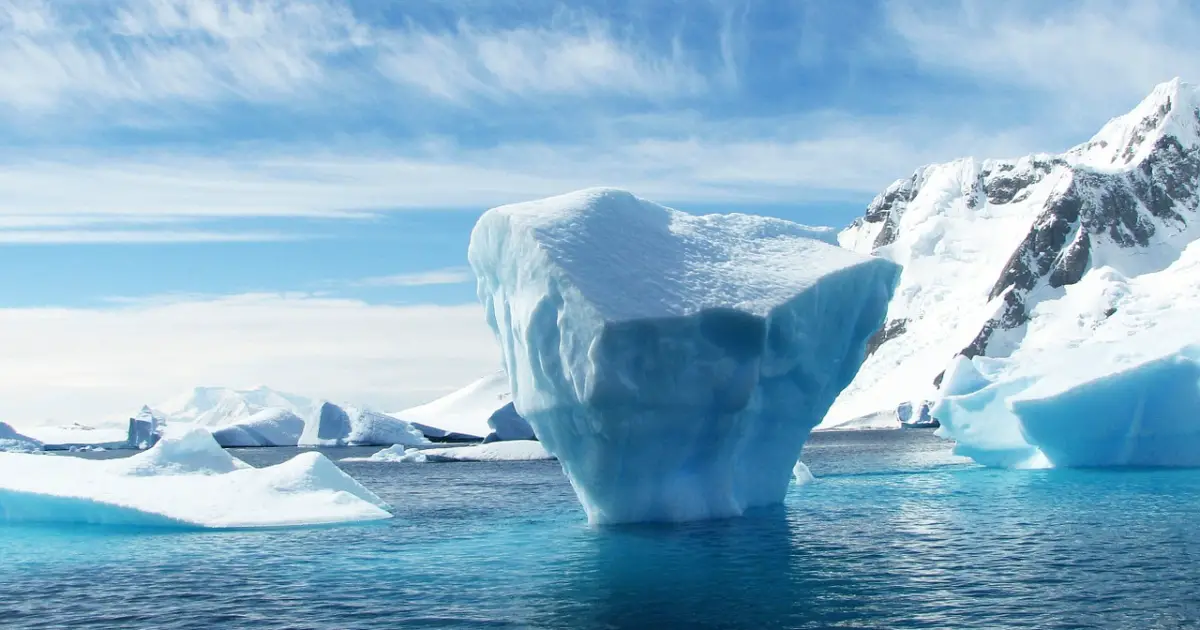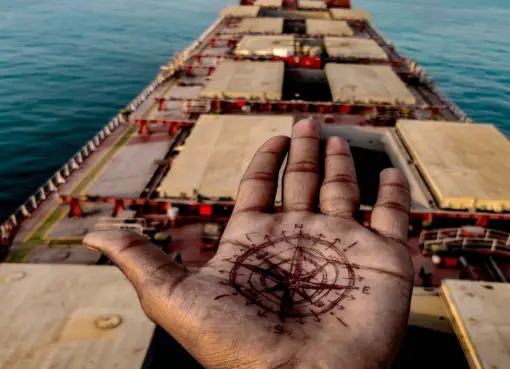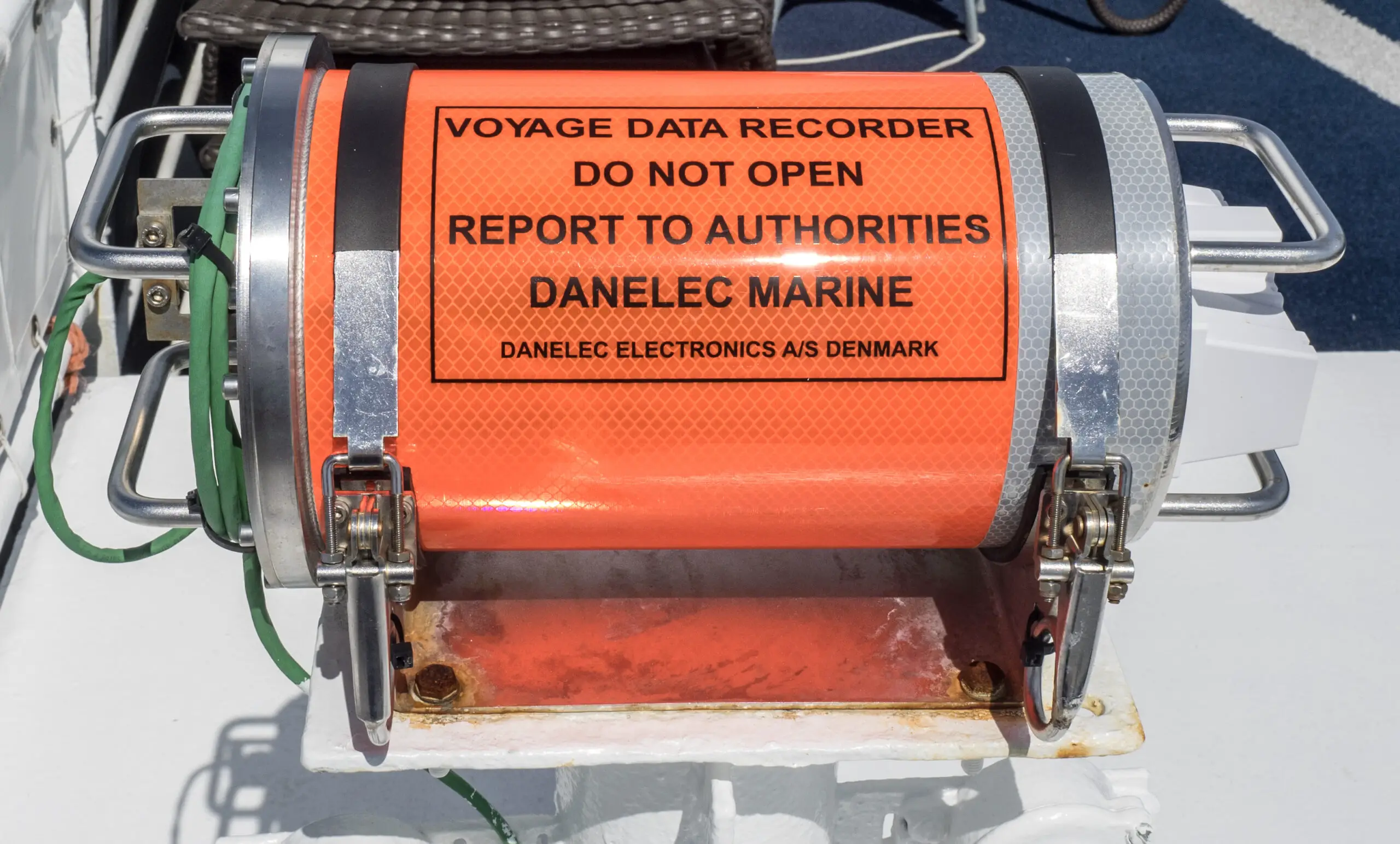When the temperature is low on the surface of the ocean, the layer of water above the surface cools down.its density changes as soon as it is cooled and due to its density it goes down and the top layer of water is replaced by the lower layer of water. This process keeps moving, it is called convection. When the temperature reduces to the 4° C, the sea surface become cooled and formation of ice take place on the surface of the sea
VARIOUS STAGE IN THE FORMATION OF ICE
1)FRAZIL ICE: Found in the top few cm of water .look live plates 2.5 cm in dimension. Formed in large quantities and give sea an oily appearance.
2)GREASE ICE: have Matt appearance and forms on sea surface as a layer of ice.
3)SHUGA: grease ice broke under the action of wind and waves. all above termed as NEW ICE on further cooling
4)ICE RIND: water of low salinity freezes slowly almost free of salt
5)NILAS: water of high salinity freezes rapidly it is subdivided according to thickness as dark Nilas & wave
6)PANCAKE ICE: formed due to break up action of above ice due to wind & wave
7)GREY ICE OR GREY WHITE: formed due to freezing together of above ice attaining thickness up to 30 cm .all above formed as young ice
8)ICE CAKES OR FLOES: above ice has broken up due to rough weather than formed first-year ice. subdivided into thin, medium, & thick 70-120 cm
9)First-year ice if survives the summers it is designated second-year ice at the onset of next winter
10)if the persistence continues it is MULTI-YEAR ICE. MAXIMUM THICKNESS IS ATTAINED OF ABOUT 3.5 METERS.
11)approx one-seventh of total thickness floats above water and ICE increases in thickness from below. as sea water freezes on the under the surface of the ice.
TYPES OF SEA ICE
sea ice is divided into two main types according to its mobility
1)PACK ICE: Free to move under the action of wind and current formed from the pieces broken off from the fast ice. consist of ice of all sizes and ages.
2)Fast ice: which does not move ice first forms near the coast and spreads seaward becomes fast to the coastline and is immobile.
ICEBERG FORMATION
Although iceberg formation floats on ocean water, they are composed of freshwater. An iceberg is simply an extraordinarily large mass of ice that has broken off from an ice cap of the glacier where it met the sea. The first stage of iceberg formation occurs when part of a glacier or ice cap that has been pushed into the sea, begins to float on the water. Tides and wave action subsequently cause stress fractures, causing a piece of the glacier to break off and a new iceberg is born ǃ This process is termed calving.
An iceberg,s extraordinary blue and white coloration is a reminder of its glacial origins. Glacial ice appears blue because pure ice absorbs other colors more rapidly than blue. This color appears in the deepest layers of the ice that is under such high pressure that all of the air bubbles have been forced out of the ice. By contrast, the surface layers of the iceberg are white because the air bubbles trapped in the snow layers reflect much of the incident light. These air bubbles also result in iceberg fizz. As an iceberg melts, fizzing results from the release of gases that have been held under pressure, trapped in bubble for thousands of years
Icebergs can be divided by geography, in that they are either ”
Arctic bergs’ or Antarctic bergs. There is approximately seven times more ice in Antarctic than in the green land and therefore many more bergs are produced in the southern hemisphere
ARCTIC ICEBERGS
Most icebergs of the northern hemisphere are carved from either a glacier and will have an irregular shape or from an ice shelf, in which case they may be tabular or encountered as an ice island. many bergs are from the glaciers of the east coast of Greenland. they are carried south by east Greenland current and either round cape farewell and into the Baffin Bay by the West Greenland current or they drift south and melt in the lower latitudes they have been known to extend up to 400 miles south-east of Cape Farewell, during the month of April. Although the two tracks for bergs from this region have been mentioned, it is pointed out that in actual fact, very few bergs are carried around into the Baffin Bay.
Icebergs in the Baffin Bay are frozen into the pack ice during the winter months and there may be as many as 40,000 bergs in this area at any one time. As the pack ice melts during spring some bergs drift south and either ground or break up in Baffin bay itself. Others are carried by the cold Labrador current towards the region of the “ grand banks”.
ANTARCTIC ICEBERGS
Of the many icebergs encountered in the southern hemisphere, the main type is a tubular shape. These are defined as large flat-topped icebergs, which have usually calved from an ice shelf. They will vary considerably in size up to 30 miles in length and be having an average height above the sea level of 40- 50 meters. The general appearance of the Antarctic bergs is white. Occasionally bergs will be sighted and described as black or of a greenish black appearance. The composition of these is often in a banded form or distinctive layers.
The general drift of Antarctic bergs is in a west-northwest direction. they then move northerly below latitude 63 deg south where they are influenced by the eastward set of the southern ocean current. One of the main dangers to shipping being in the area of the tip of South America, with occasional bergs being sighted off the cape of good hope and the southern coasts of Tasmania and the New Zealand. Most southern hemisphere icebergs suffer erosion by weather and water of the drift current and are prevented from going into lower latitudes and as such the main shipping routes are generally clear of the icebergs.




